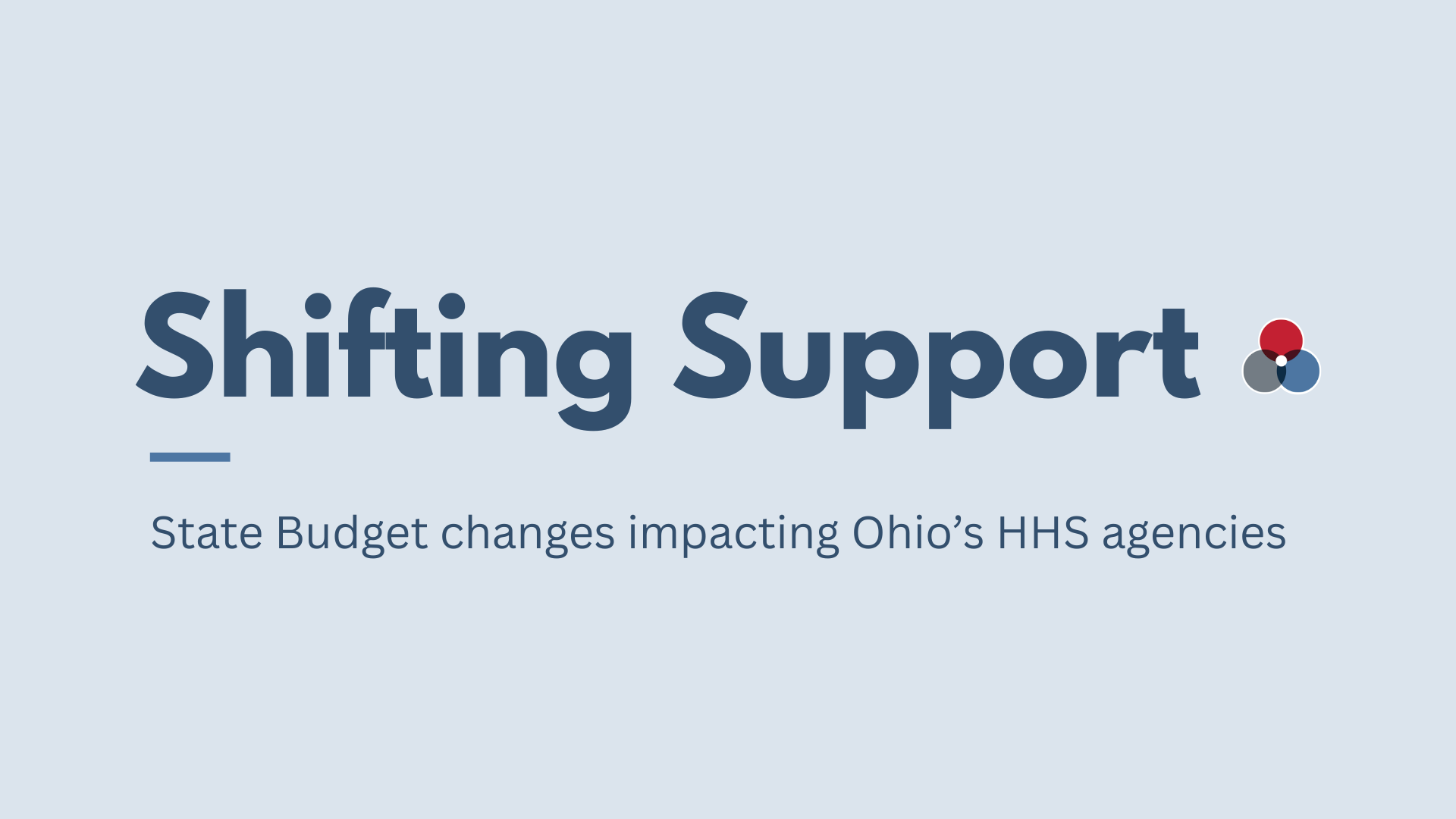Family and Youth in Crisis, How Ohio's Identifying and Funding the Population
Consultant, Children’s Medicaid Policy
Ohio’s 2018-2019 biennial budget included an appropriation of $5 million in Temporary Assistance for Needy Families (TANF) funding per year for children with complex care needs whose parents or legal guardians are at risk of relinquishing custody solely to obtain access to needed services. Efforts to secure this “family and youth in crisis” funding were led by Senator Randy Gardner and Representative Sarah LaTourette, who also co-chaired the Joint Legislative Committee on Multi-System Youth (MSY) in 2016. The budget language directed the Ohio Family and Children First (OFCF) Cabinet to work with stakeholders to determine how the funds would be used.In the months since the budget appropriation passed, stakeholders worked with OFCF on a guidance document to define the population of focus and funding guidelines and requirements. An application and tips to access the funding was recently released by OFCF to county Family and Children First Councils (FCFCs), and reimbursement can now be provided for services and supports delivered on or after April 12, 2018. CHILD AND FAMILY ELIGIBILITYThe target population for services and supports includes children who are designated as Serious Emotional Disturbance (SED) and who are at risk of being removed from the home in order to access needed services. To access funds for services, children must live in families at or below 200% of the Federal Poverty Level (FPL) and have identified needs across multiple systems. [Note: stakeholders are continuing to work on eligibility limits for family income; please see final section of blog for more information.] The youth/family must be enrolled in the county Family and Children First Service Coordination (FCFC) Process and must be at risk for custody relinquishment as demonstrated by any of the following:
- History of hospitalizations, including stabilization visits
- Previous out-of-home placements, including but not limited to residential treatment
- Placement in Kinship Care (including voluntary/temporary Kinship Care where custody is not terminated and Kinship Navigator supports**)
- Child Welfare Alternative/Differential Response; Absence Intervention Teams or Multidisciplinary Truancy Teams as required by HB 410
- Developmental Disability and/or Intellectual Disabilities services for youth at risk of not being able to be maintained in their own home
- Previous or current involvement with juvenile court
To access funds for services, children must live in families at or below 200% of the Federal Poverty Level and have identified needs across multiple systems.
FCFC SERVICE COORDINATION REQUIREMENTS As mentioned above, the youth/family must be enrolled in the FCFC process to be eligible for reimbursement for services. FCFCs must encourage and facilitate the full participation of families in all service coordination plan meetings. These individualized meetings should include appropriate agency/school staff and family identified support persons. Meetings should be held before non-emergency, out-of-home placements and within 10 days of emergency placements. FCFCs must use a standardized process to assess the needs and strengths of the family, and develop an Individualized Family Service Coordination Plan – including a crisis response plan for preventing known short-term crisis situations - jointly with each family.REIMBURSEABLE SERVICESFCFCs can apply for retrospective reimbursement for the following services provided to eligible youth:
- Non-clinical in-home parent/child coaching
- Non-clinical parent support groups
- Parent/Peer/Youth Mentoring
- In-Home and Out-of-Home Respite Care
- Transportation (e.g., cab/taxi fares)
- Structured activities to improve and strengthen the provision of social/emotional supports so that the youth can be maintained in the home while receiving services
- Food, clothing, shelter, utilities, and/or household expenses assistance for no longer than 4 months
- Family and work related childcare for no more than two (2) consecutive months and 3 months total (with 30 days between each occurrence)
- The provision of Service Coordination/Wraparound
Funds can only be used for services provided while the child remains in the custody of the family, and cannot be used for services while the child is in an out-of-home placement. Further, reimbursement is not available for clinical, medical or behavioral health services, including residential treatment per diem costs.OhioMHAS FUNDS FOR FCFCs IN RESOURCE-SCARCE COMMUNITIESWhile some larger, well-funded communities will be able to pay for services for children and families, and later obtain reimbursement for these services through the Crisis fund, many resource-scarce communities will not have sufficient funds on hand to pay for services and wait for reimbursement at a later date. To address this issue, Tracy Plouck, Director of the Ohio Department of Mental Health and Addiction Services (OhioMHAS), established approximately $250,000 to be used to find eligible services for eligible individuals identified by local FCFCs in communities that do not have local funding. To use these funds, the child accessing services must have an emotional disorder and require services from the behavioral health system. Since this funding cannot be made available to children without behavioral health challenges, stakeholders are hopeful that other Ohio Agencies will follow OhioMHAS’s lead to establish similar funding for children who need other types of services.CHALLENGES WITH EXISTING FUNDING LIMITATIONS Income Threshold: Senator Gardner and Representative LaTourette created the crisis funding appropriation to address the unmet and uninsured needs of multi-system youth who are in crisis and in danger of parental custody being relinquished in order to access appropriate services, regardless of their level of family income. The costs to families raising these highly challenged youth are often extreme, and can be devastating to families with incomes well above poverty. And yet, we know that mental illness, developmental disabilities, trauma and other overwhelming conditions do not happen exclusively to youth in low income families. Unfortunately, the current parameters on the funding limit its use to families earning less than 200% FPL, rather than to low and middle income families. Stakeholders may need to seek funding other than TANF to serve families earning more than 200% FPL. That’s because U. S. House Ways and Means Committee Chair Kevin Brady has introduced Legislation to reauthorize TANF that would requires states to spend all federal and state TANF funds on families with incomes below 200 percent of the poverty line. Work on this issue will almost certainly continue into the next year with Senator Gardner, Representative LaTourette and the newly elected administration to address this within the next biennial budget.
Since this funding cannot be made available to children without behavioral health challenges, stakeholders are hopeful that other Ohio Agencies will follow OhioMHAS’s lead to establish similar funding for children who need other types of services.
Retrospective Funding Mechanism: The funding model takes a retrospective approach, rather than a prospective approach to provide both assistance and funding to local communities who have families in need. This type of mechanism will always lag behind service and assistance needs, so stakeholders are hopeful that this funding mechanism can be made prospective next year.Additional information about the Family and Youth in Crisis Funding can be found on the OFCF website’s biennial budget page.








